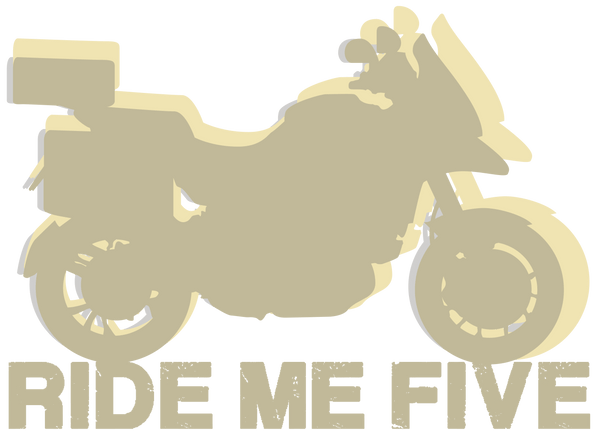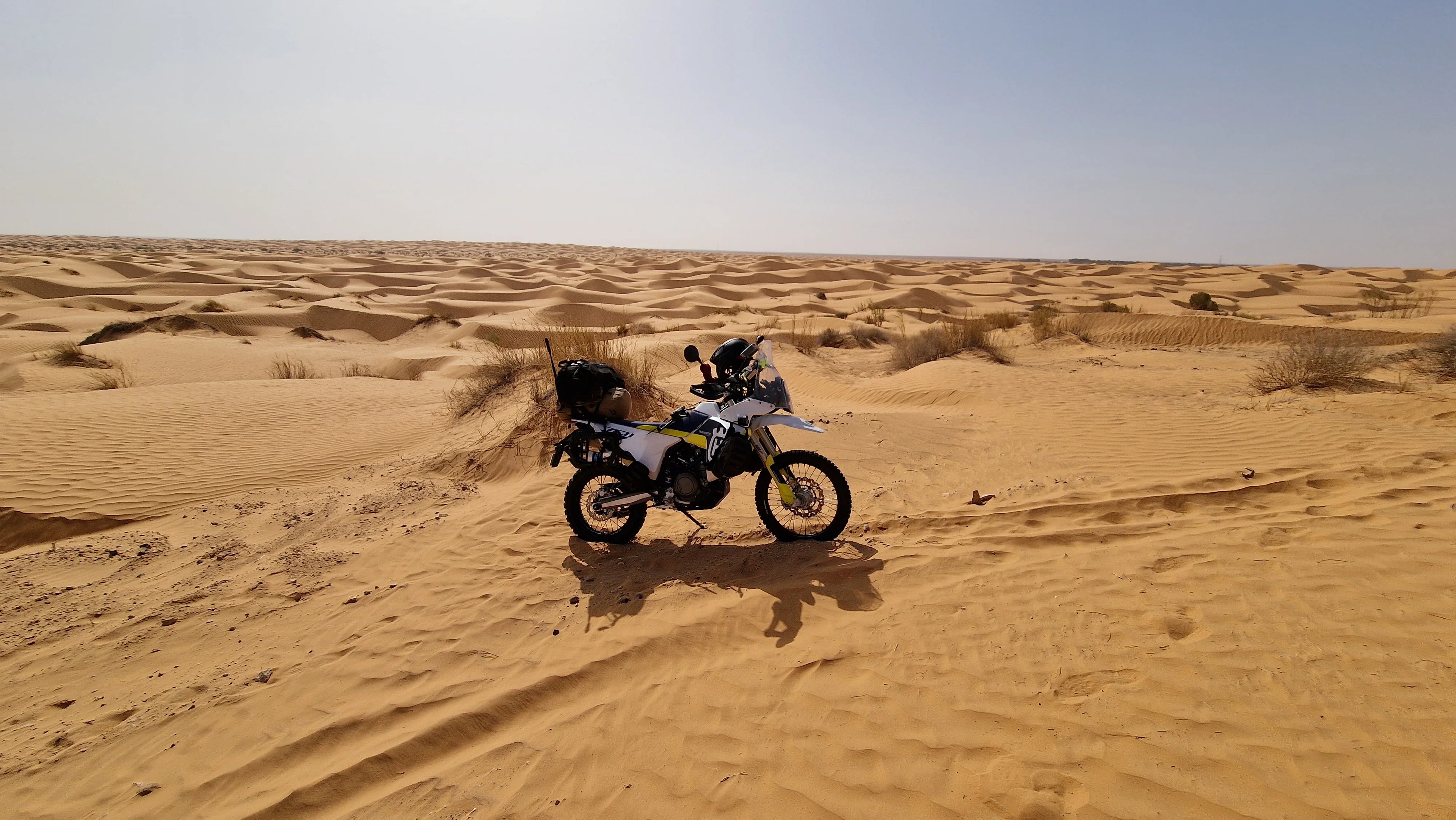
ASIA
This trip is the dream of a lifetime: since I was little I have been passionate about adventures and motorcycles. Over the years I have made various trips, but none as ambitious as the one to come. The idea is to get around the world on my motorcycle for as long as necessary. If you want to know a little about me, click here.
In my opinion, closing a route before leaving would be crazy. The only thing I am clear about is the motorcycle to use and the strong ambition to travel and explore the five continents.
This is a project that has been forged over the years, day after day and kilometer by kilometer. There has always been a small flame burning inside me. With the passage of time it has become more and more intense, to the point where I couldn't help but launch into exploring the exciting world in which we live. I'm going to change my house for a tent, family and friends for the people on the road, and the office for the road. The only thing I keep is my motorcycle, which will be my faithful shield during many adventures.
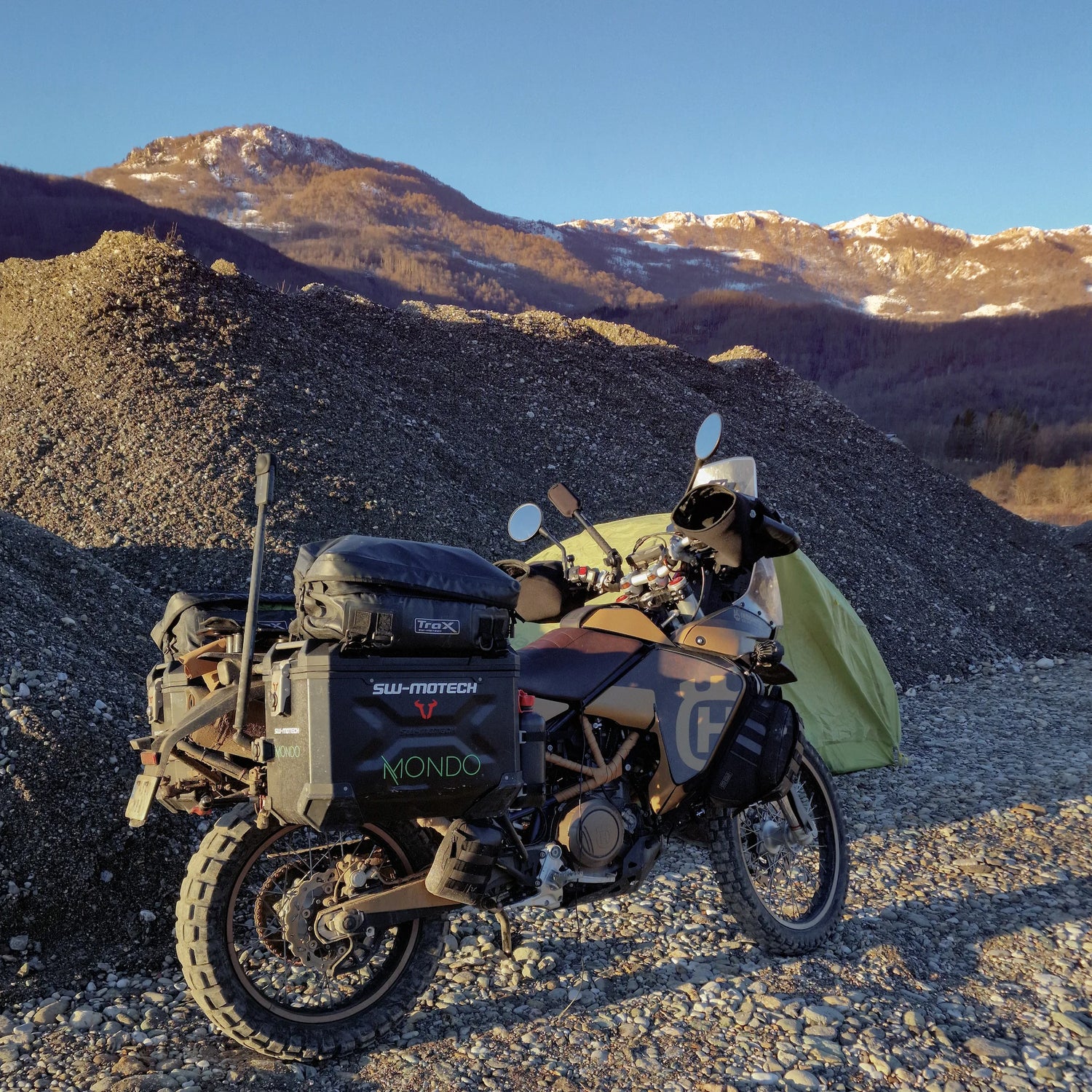
ITHACA
Husqvarna 701 Enduro LR, named Ithaca. It is the motorcycle I have chosen for this new adventure. After the trip to Africa I realized how important weight is in this type of trip. I saw that the small local scooters were able to go through places that I had difficulty going through. That's the reason why I decided on a super light bike. It only has one cylinder, that means much less weight than a twin, about 50kg less. It is a very peculiar motorcycle, a mix between an enduro and a trail. Focused on short enduro trips. My mission is to adapt it for big trips. The base is phenomenal, it's a risky bet, but if it turns out well, it will be one of the best travel bikes on the planet.
The bike is not especially designed to carry a lot of load, so I have had to adapt it a little. It is a two-seater motorcycle, but since I am going to travel alone, I should not have problems in that regard.
I have chosen the Husqvarna 701 for its lightness, for its suspensions and because there is a kit with which I can add 12 liters of extra gasoline, which added to the 13 with which it comes, amounts to 25 liters. With the adjusted consumption it has, it means a range close to 500 km. With the Transalp I had about 300 km.
It is a motorcycle with an enduro spirit, just what the Transalp was missing most. That motorcycle was an asphalt motorcycle adapted to the countryside and this is a country motorcycle adapted to travel.
The part I like the most about the motorcycle are the suspensions, the more kilometers I accumulate on a motorcycle, the more I understand the importance of good suspensions, the motorcycle has one from the WP brand, the main difference that I have noticed is that when it should go to the ground, these suspensions forgive my mistake and keep the bike upright.
Of course it comes with 21″ and 18″ wire wheels.
What I like the most is its 147 kg weight. About 50 kg less than any twin cylinder. That means that this bike loaded with luggage is around the weight of a twin without luggage. It has very generous ground clearance so I can get into trouble.
Another reason why I have chosen this motorcycle is because it is one of the modern motorcycles with the least electronics. Consumption is lower than other motorcycles. I estimate that every 100,000km the motorcycle consumes about €2,000 or €3,000 less fuel than the Transalp.
In short, I am in love with this motorcycle, its suspensions, its lightness and its autonomy. Everything good has a less good part. The counterpart is that it is a somewhat less comfortable motorcycle, since the seat is narrower because instead of comfort it seeks maximum control over the motorcycle and a single-cylinder engine vibrates more than a twin-cylinder.
Still, I'm making modifications to polish that issue. The guys at SW-MOTECH reupholstered my seat by adding 2cm of gel. I prefer to sacrifice some comfort in exchange for having a motorcycle that allows me to take on the most remote roads on the planet.
Now the bike doesn't limit me, the limit is set by me and the good shape I get in.
In general terms, it is a light motorcycle, very strong, with very good suspensions and great autonomy. We will see what adventures await us ahead.
MOTORCYCLE PREPARATION
I like to tinker with my motorcycles, so I have improved some elements and added a couple of extras that I considered important for this trip.
- Tires: I have not yet decided on the tires I will use to tour Asia.
- Air filter: As standard it comes with a "half meter" box for the air filter, I have decided to change it for a washable and much smaller one. I simply have to wash it every few kilometers and re-impregnate it with its oil. It is a great advantage, since you forget about having to get the spare part along the way.
- Suitcases : After the success of the suitcases in Africa, I had no doubt in choosing the TRAX ADV from SW-MOTECH again. Aluminum suitcases that provide great resistance and comfort. They are sealed with a rubber lip to prevent water and dirt from entering. Although they are not too cheap, I consider them essential due to the advantages they offer: rigidity , good load capacity and safety . Regarding the latter, metal locks protect your luggage and help you get rid of it without too many worries. The only negative point is that these suitcases make your motorcycle wider and heavier. I carry my clothes and camping equipment in a 100% waterproof dry bag that is still like new after the hard trip to Africa.
- Shock absorber and fork springs: For me, suspensions are one of the most important parts of a motorcycle. The ones that come standard are awesome suspensions. Even so, since I'm carrying so much weight, I've decided to upgrade the cartridge and I'm thinking about putting a harder spring at the back so that the bike sinks less with all the weight. Coming from the Transalp, I notice an abysmal improvement, in areas where the Transalp was unmanageable, these suspensions absorb it quite easily.
- Screen and navigation tower: The motorcycle comes without a screen, it is better for enduro riding, but for traveling, the screen protects you from the wind and cold. It provides an extra point of comfort for long days riding a motorcycle. Additionally, the tower comes with a support to add odds and ends.
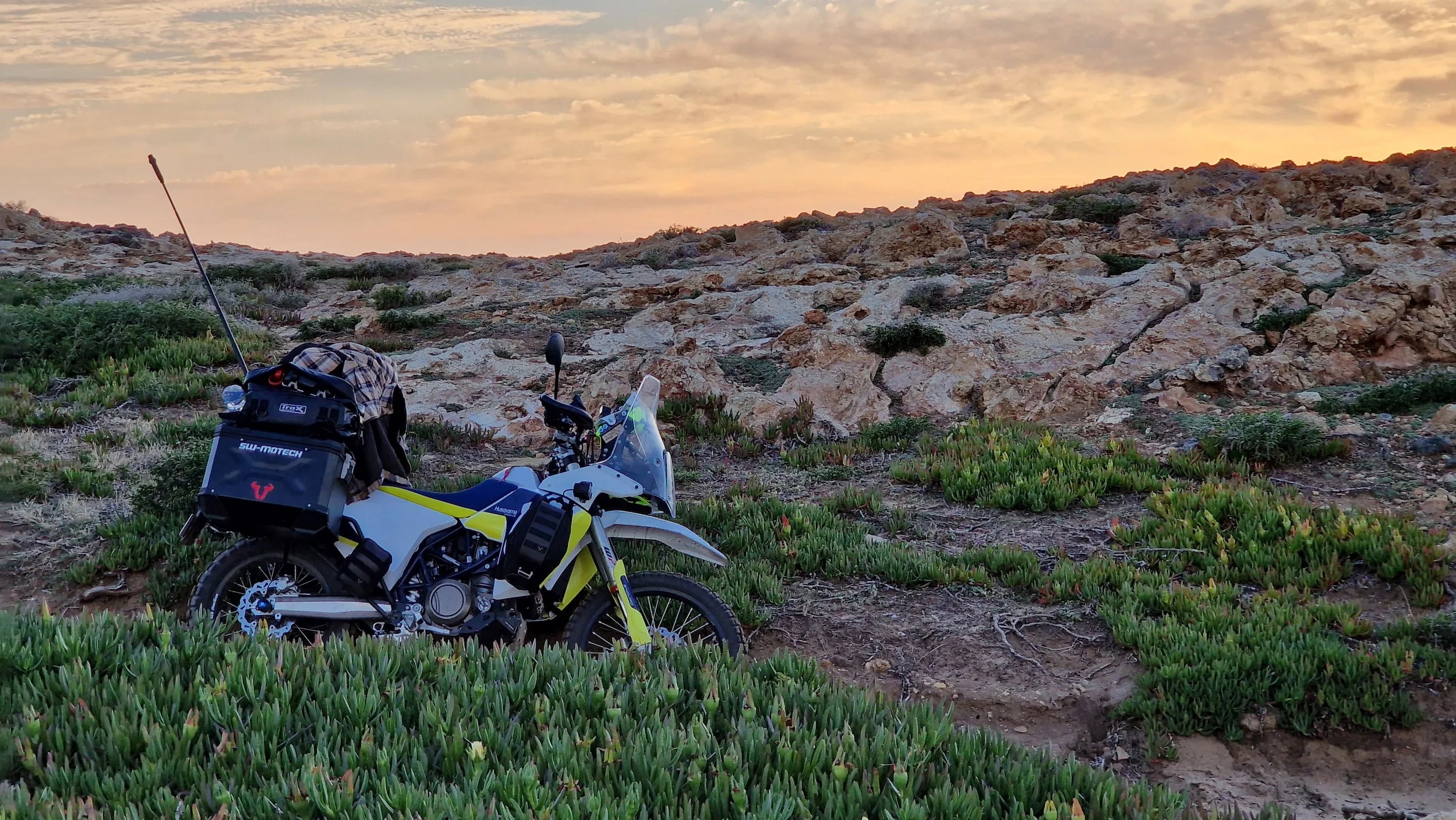
- Additional headlights : the lighting on motorcycles is usually quite limited. For this reason I have chosen to add some extra headlights. The SW-MOTECH EVOs are quite easy to assemble and give you that point of light that the stock motorcycle lacks. It helps you see and be seen, which is essential when you are riding a motorcycle and night falls.
- Crankcase protector: highly recommended, and even essential in broken tracks . The 701 comes with a small plastic one. It's fine for small scratches or small stones, but if things get serious, you need a metal one. In Africa it saved me many broken crankcases. Once you assemble it, the times it has saved you from a possible crankcase breakage become "recorded" in it. I wear the one from SW-MOTECH , very robust and resistant.
- Ventilated fender: The motorcycle has a high fender, in Africa I suffered a lot with the low fender in muddy areas. Single-cylinder engines tend to get a little hotter, so I opened some vents in the fender and put a metal grill on it to prevent stones from hitting the radiator. I don't know anyone who has tried it so we'll see how this idea goes.
- USB socket and cigarette lighter: I have added several USB sockets to be able to charge everything on the go.
- Kickstand sensor cancellation: If this sensor is damaged, the motorcycle will not start, so I have canceled it.
MAINTENANCE AND SPARE PARTS
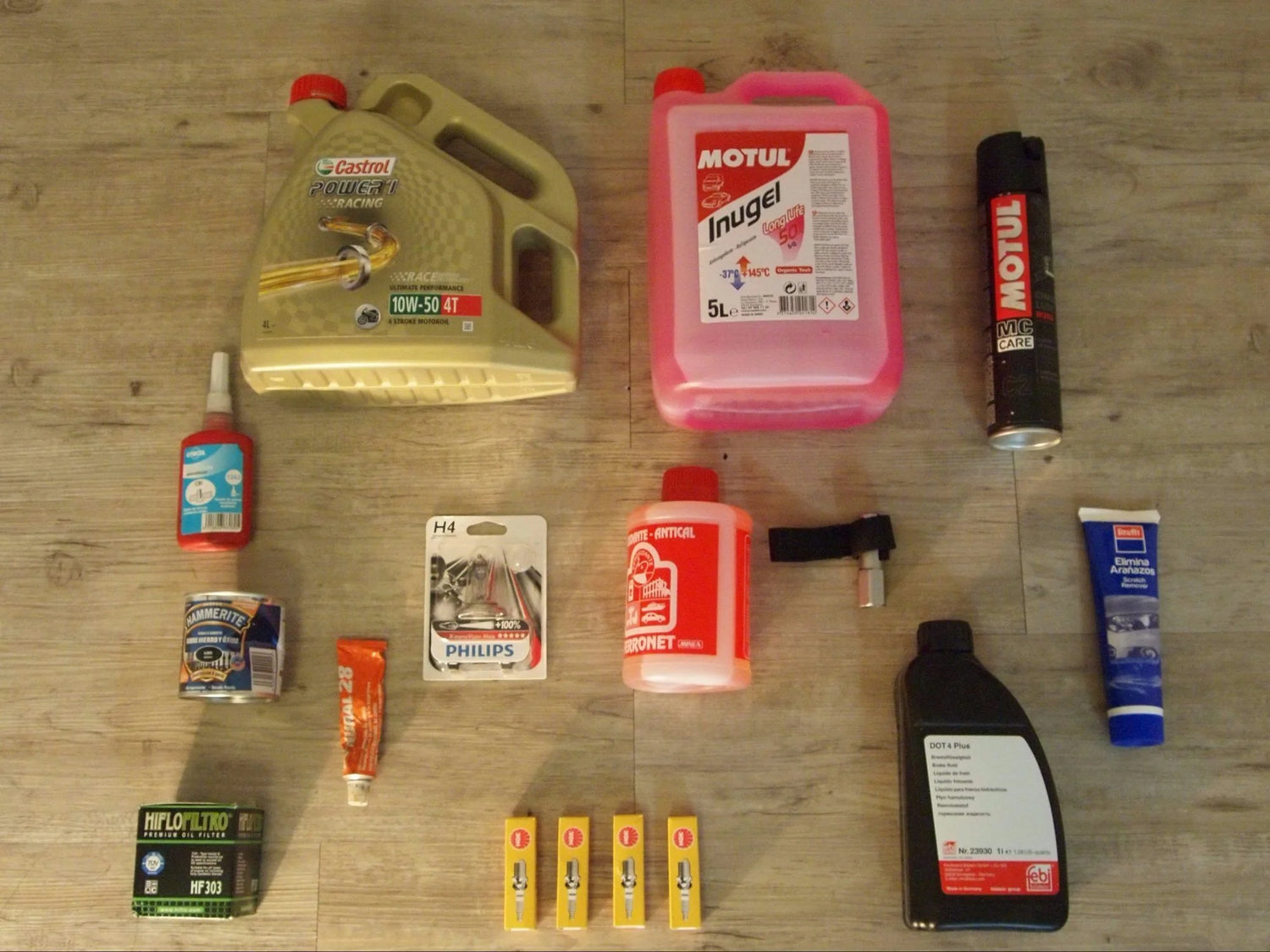
For economic reasons and mere romanticism, I will carry out maintenance and repairs on my own.
No motorcycle is perfect and each model tends to fail in the same places, so the ideal is to know which parts tend to break down and be prepared when this happens. I take various utensils and tools, as well as some spare parts that I will need during the trip.
The list of spare parts that I take is:
- Oil filter.
- Front and rear brake pads.
- Chain grease.
- Reinforced front and rear cameras.
- New gaskets for valve adjustment.
- Flanges, straps, grease etc…
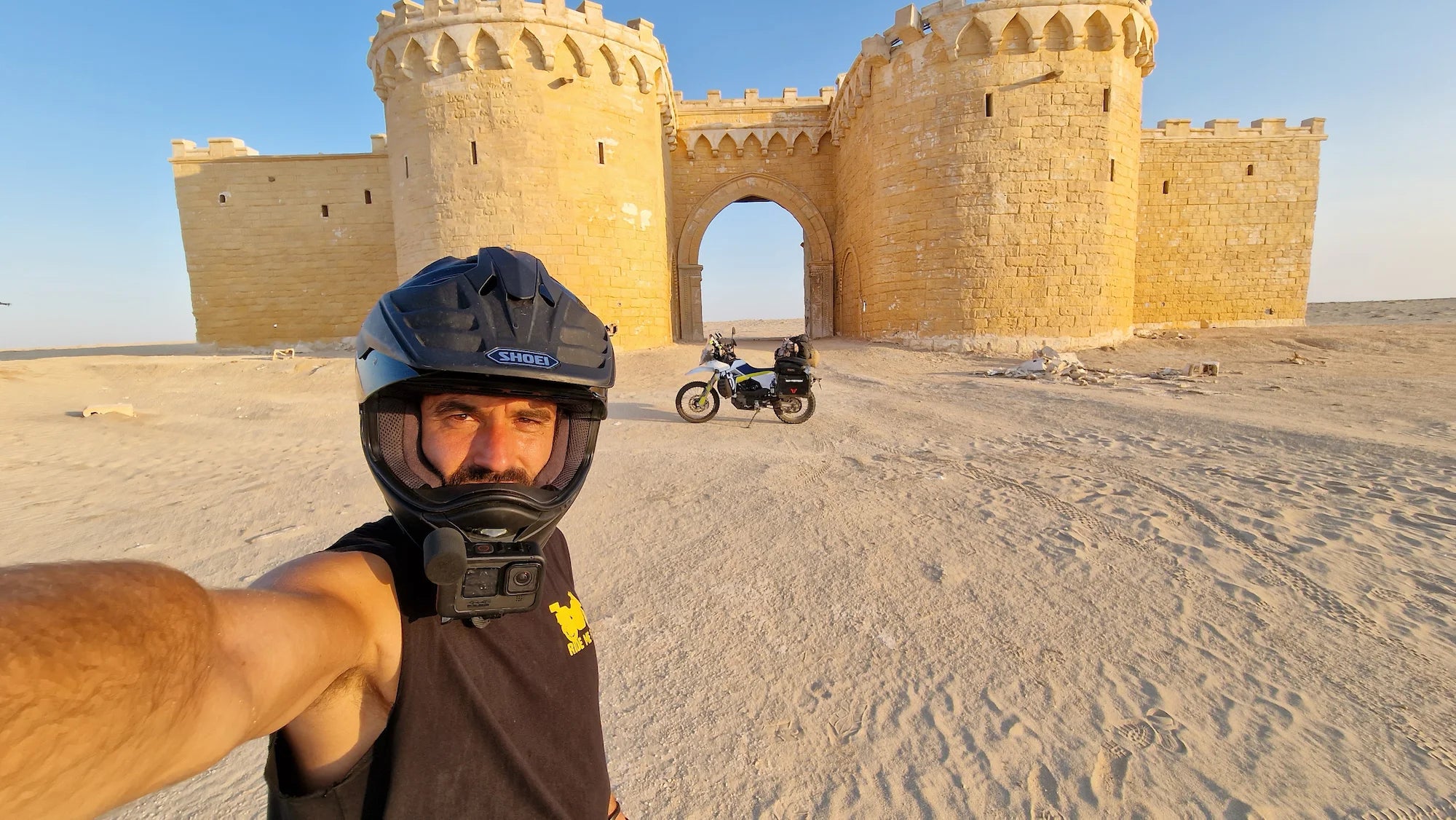
PLANNING
In my opinion, the most important thing is to be clear, know why you do it and be able to sacrifice some things to pursue your dreams. I think that, with this in mind, the most difficult step has already been taken.
My case, like everyone else, has presented complications. We are lucky to have the internet, whoever doesn't know something, it's because they don't want to. I have spent many hours on the Internet to learn all kinds of information that is useful for traveling.
THE ROUTE
As I have said before, planning a route with such characteristics would kill part of the adventure. One of the things I like most about traveling by motorcycle is being able to decide “where to” and “for how long” almost every day. Having the freedom to set the course that I most want without rushing or conditions.
The only thing I know is that I intend to travel all five continents. I started with Africa , probably the purest and also the most difficult. The second content I have chosen is Asia. I really want to venture into those territories.
Turkey is the gateway to the huge continent . I don't want to close doors, I have several routes in mind but I want the route to be built as I go.
It is clear that many things can happen along the way, so what I do is stay calm and open to possible changes.
CAMPING AND SURVIVAL EQUIPMENT
With a goal like this, I think it is important to bring decent material. In my case, it is not the best on the market, nor from top brands, but by searching and asking around I have been finding quite quality alternatives at affordable prices.
One of the main challenges of motorcycle travel is the limitation of space and weight. It has been an essential condition that luggage is reduced to the minimum and essential.
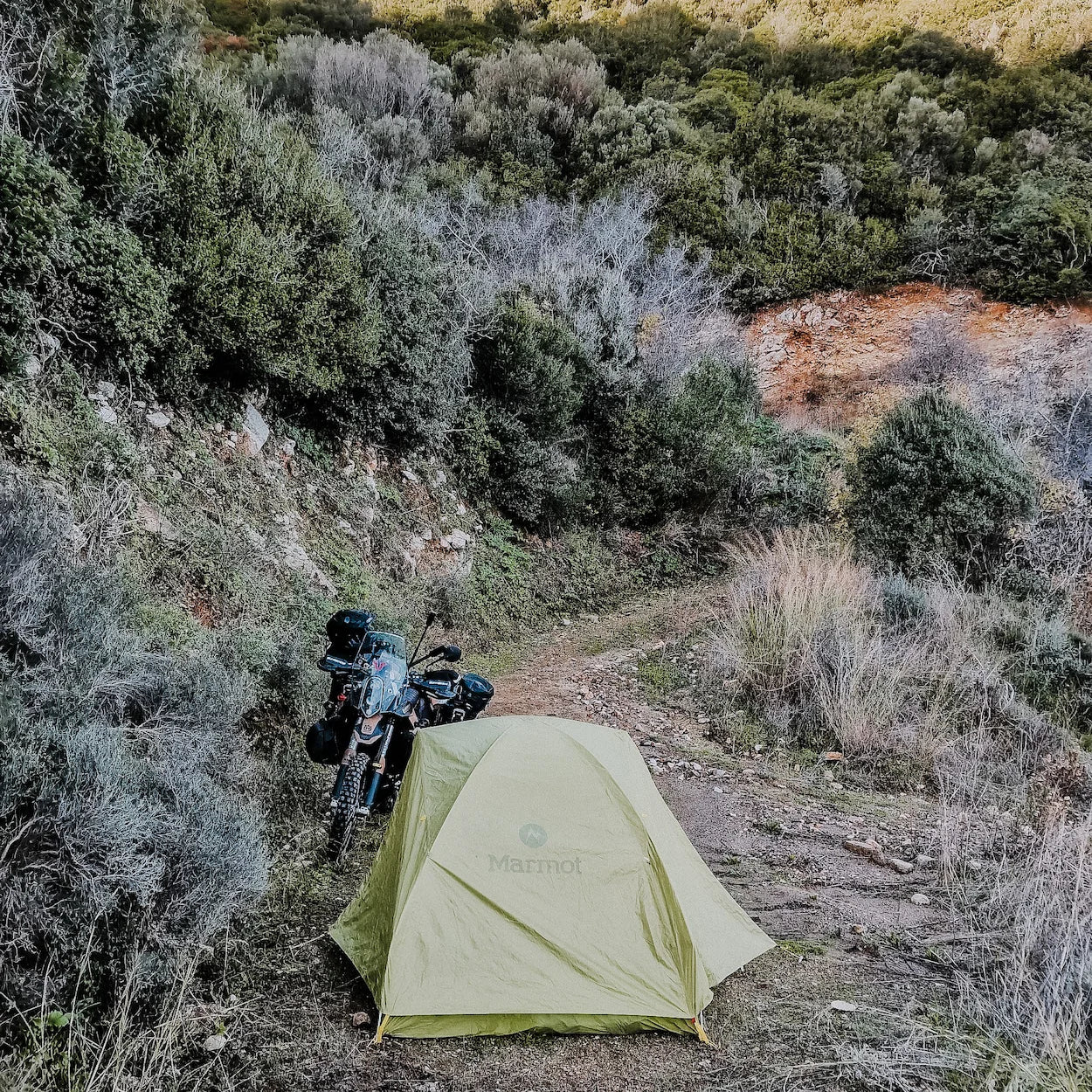
- Tent: it should be small and light , with a high degree of waterproofing, with good breathability and made of resistant fabric. I have a mid-range one with good waterproofing and about 2 kg in weight.
- Sleeping bag: as with the tent, excesses must be avoided. In my case it is a down bag that weighs approximately 1 kg and with a comfort temperature of 0ºC . Inside the tent the heat is retained better, but for extremely cold nights I have a fleece inner sheet-bag . This, apart from being more hygienic (it can be washed), theoretically provides about 10 extra degrees, which in my experience is not that many . At least in my case, and it only adds about 3-5 degrees . Another advantage is that it allows you to use it as a summer bag on hot nights.
- Mat: The mat I have chosen is inflatable and lightweight. It fits in one hand and, once inflated, is 9 cm wide and 195 cm long. It has insulating fabric inside , something essential when camping, as it prevents you from losing heat through contact with the ground.
- Stove: I take a gasoline stove because of the easy access to fuel. It is very versatile, working with several substances, and will allow me to cook and eat hot.
- Water purifier: I have a purifying device that works with ultra violet rays. The most important thing I carry on the motorcycle is water.
- Flint: The advantage of flint is that it works in almost all weather conditions and does not matter if it gets wet.
Of course I carry a knife, lighter, rope, duct tape and all those things that are always a great help when doing any mess.
MOTORCYCLE EQUIPMENT
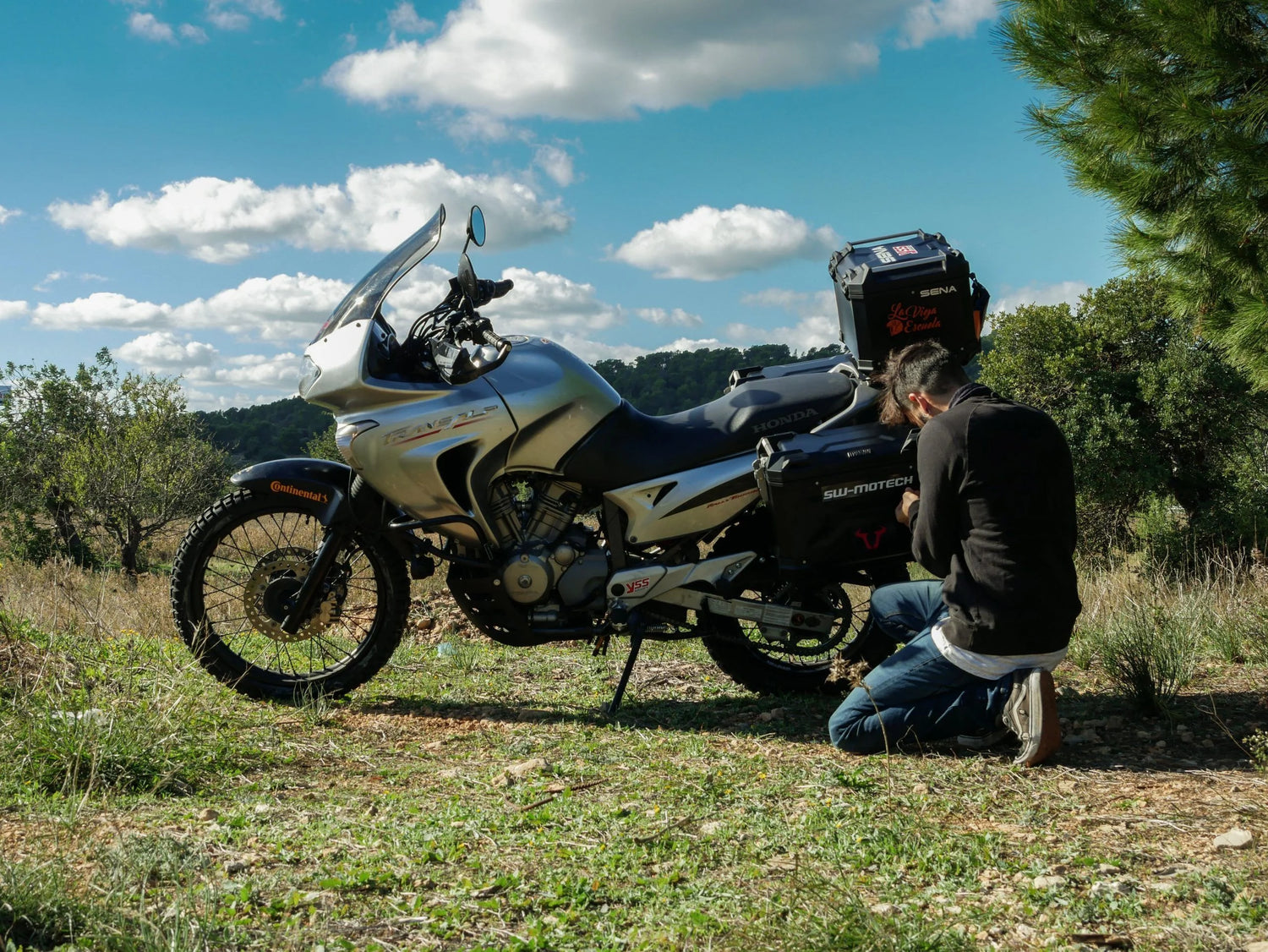
- Helmet: I use Shoei's Hornet ADV. I have chosen a closed one for the security it provides. It is very similar to a full-face one but has a chin guard and upper visor . It is actually a hybrid between a full road bike and an enduro bike. The advantages are that, while maintaining the safety of a full-face helmet, it allows you to breathe better in case of suffocation, it has a visor that protects you from the sun and branches and offers a wider field of vision.
- Jacket: I am in the process of designing and manufacturing what will be the perfect jacket with Indómita.
- Kevlar shirt: For when it's hot, I have a Kevlar shirt (AAA, the maximum that exists) with protection on the shoulders and elbows. It is very light compared to a traditional jacket. We are developing the prototype with Indómita.
- Gloves: Gloves... It's hard for me to wear gloves, I lose touch, but it's a bad habit. I have two prototypes of Indómita. Some are ventilated for summer and others are waterproof for mid-season.
- Pants: We are developing with Indómita a prototype of Dyneema pants (AAA is a material 15 times more resistant than steel). They are removable for summer and have generous vents. Now I travel with version 2.0, we are polishing it more and more and when it is perfect, we will manufacture it. They have a thermal lining in addition to Gore-Tex that I can remove and put on with a zipper.
- Boots: to ride tracks it is important to use tall and rigid boots, but not as rigid as motocross boots. I wear the Sidi Adventure. For my foot shape, they are extremely comfortable boots. At the moment completely waterproof since they have a Gore-Tex membrane.
LUGGAGE
It is a difficult task to distinguish between necessity and whim. Space is very limited on a motorcycle, so you have to think a lot about what to take and what to leave on the ground.
ELECTRONICS
- Computer: There are ultralight models ideal for traveling, but that is not my case. I carry a normal laptop , with which I edit my videos.
- Battery jump starter : it is a small external battery with which to charge electronic devices. As if this were not enough, it makes it possible to start the motorcycle in case its battery does not want to.
- Cameras : I have a mirrorless type camera . Once again, due to space issues, it is a type of camera that fits my needs. By not having so many crystals inside, it is more resistant to knocks and the constant rattling of the motorcycle.
- Action camera: I have chosen a GoPro sports camera , for its versatility and resistance . Everyone knows them and we have seen what they are capable of doing.
- 360 Camera: They are a great revolution since they record everything, 360 degrees and then you can choose which part you keep. They make the editing heavier, but they are worth it.
- Drone: a Mavic 3 , one of my most expensive investments. I consider it totally dispensable, but I like it a lot and I think it provides a different vision. He only follows me when he wants...
- GPS: I only use Maps on my mobile . Without internet, it only shows you the map and a small blue dot that is you. I prefer this to other alternatives, as a browser takes away the need to ask questions, meet people, and immerse yourself in the country. By preventing you from getting lost, the browser also prevents certain adventures.
- Mini compressor : Essential. It is capable of inflating a motorcycle tire in a few minutes and works with a battery or connected to the power/cigarette lighter. I have certain doubts, it remains to be seen how it works...
TOOLS
Again, due to space issues, I cannot carry everything I would like, so I have had to make a selection of tools . I only carry the ones that are most used on my motorcycle.
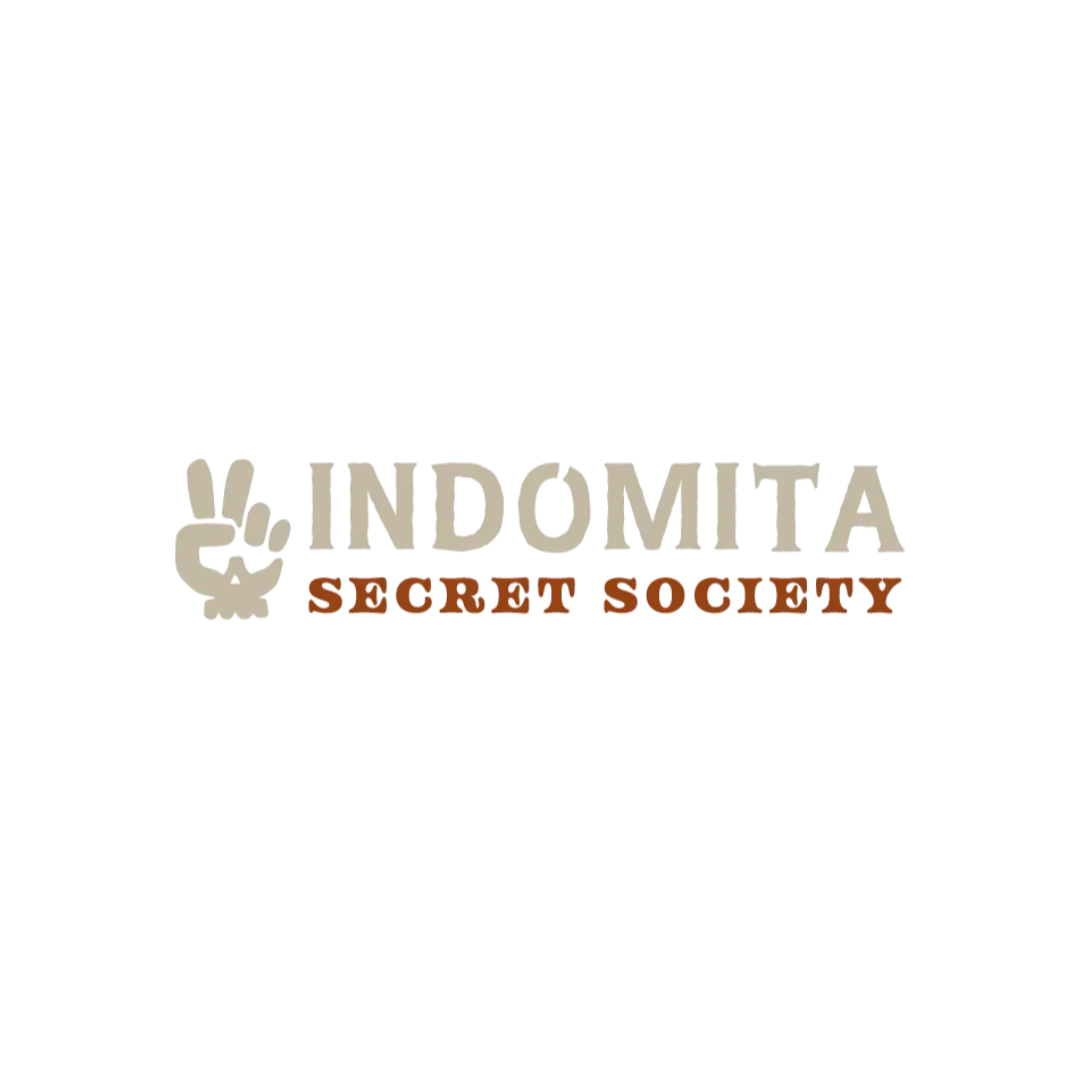
CLOTHES
All my clothes are from Indómita , until I fill the free space , just enough to last a week or two until I have to do the laundry.
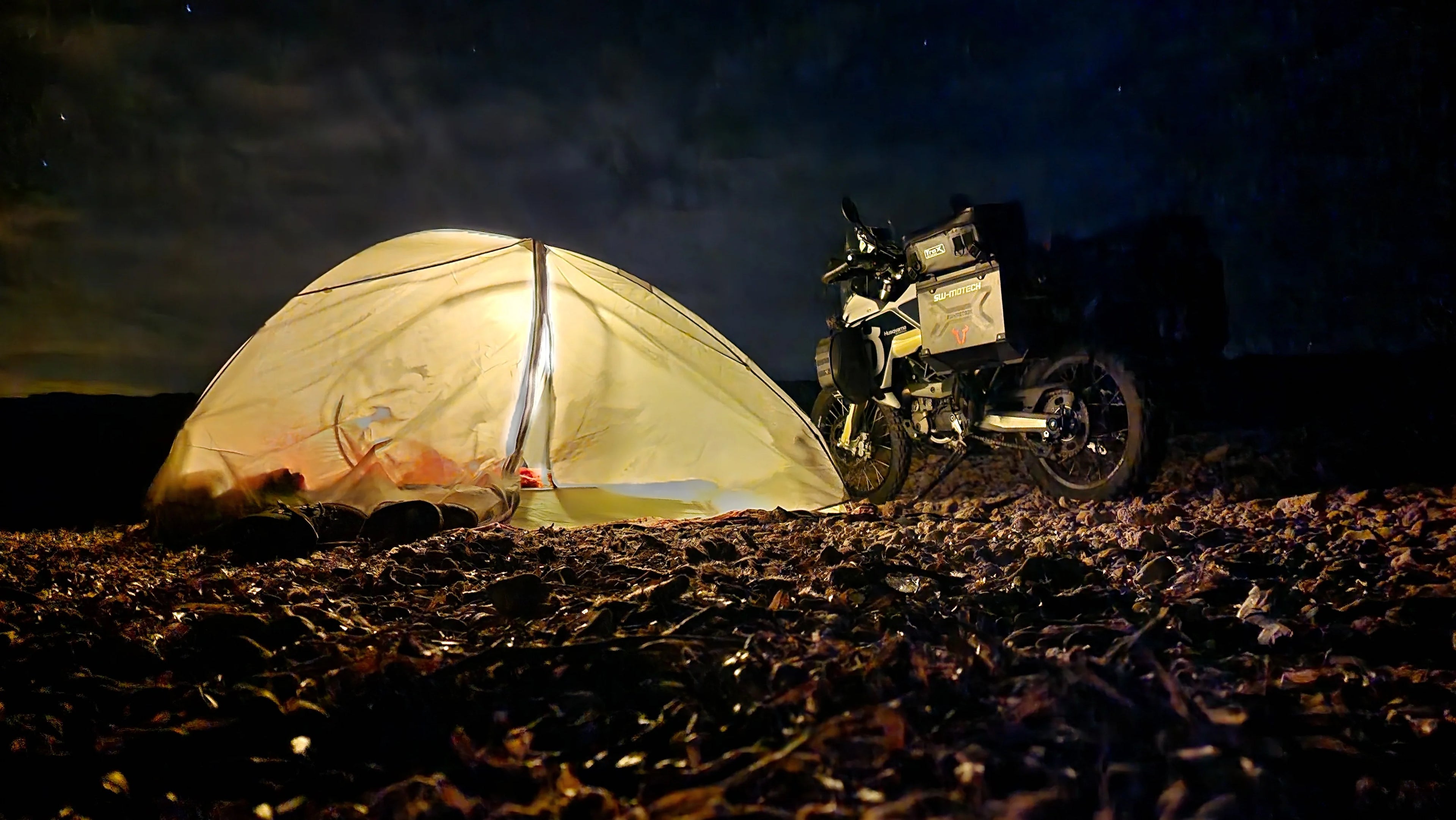
DOCUMENTATION AND VACCINES
For me, bureaucracy is the most boring and exasperating topic of all: slow, difficult, not very humane and often corrupt. But it's part of the game, and nowadays you need papers for everything and traveling by motorcycle was no different. I am lucky to live in a so-called “rich” country. This gives me the privilege of being allowed to enter practically any country in the world simply for being born here. Unfortunately, there are still many borders that are not two-way.
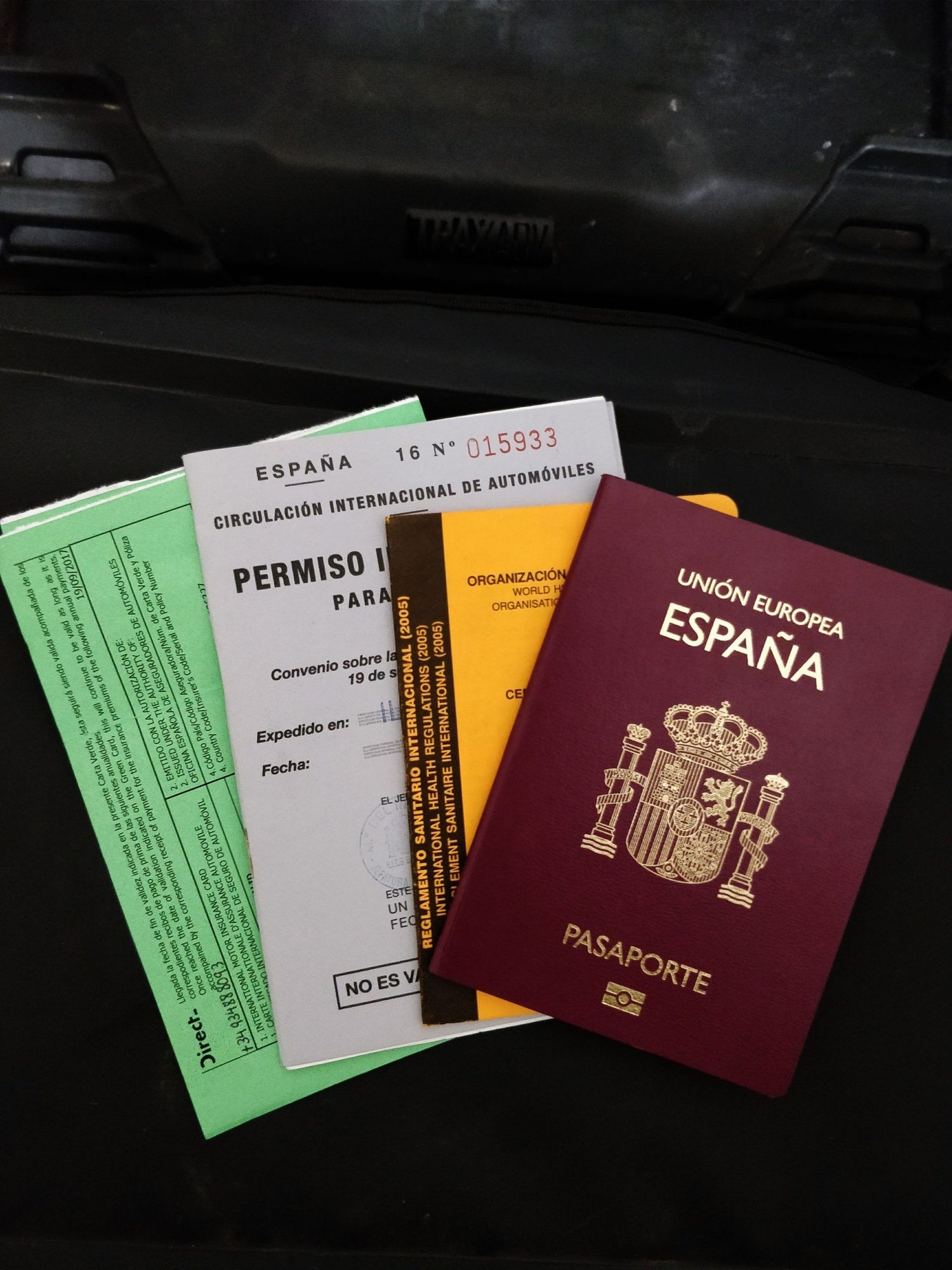
- Passport : logically it must be in order and have sufficient months of validity. Many countries ask you for at least six. You must also have enough blank sheets to be able to complete the trip.
- Visas : I don't like the idea of having to carry visas prepared from home, because I don't know what dates I'm going to arrive or if I'm going to divert the trip to another country. What I am going to do is take them out at the border itself , but there are countries that do not allow it. In this case they can normally be taken out in the capital of a neighboring country . We'll see how it goes. I prefer to have total freedom even if it means some hassle along the way.
- Carnet de Passages en Douane (CDP) : this carnet is something like a temporary import permit for the motorcycle , to ensure that you are not going to sell it in some country. It is necessary if you are looking to cross certain countries with your own vehicle. It is controversial because, to get it, you must go to a bank and deposit a large amount of money. This depends on the value of your vehicle, although the minimum is 2,780 euros. They give you a guarantee with its corresponding management and maintenance costs (banks have to live on something) and, if you want to recover that guarantee, you have to return the CDP with all the entry and exit stamps of the country.
The card is valid for one year, and its cost ranges between €250 and €280 , depending on the number of countries you are going to visit. It has quite a few risks. For example, if you forget, you don't get the exit stamp from a country, your motorcycle is stolen or you have a breakdown and you can't continue, you automatically lose your endorsement. The only organization that manages it in Spain is RACE . I have not found any alternative or a way to avoid having to obtain the license, since on my route there are several countries in which it is "essential" and many others in which it is highly recommended.
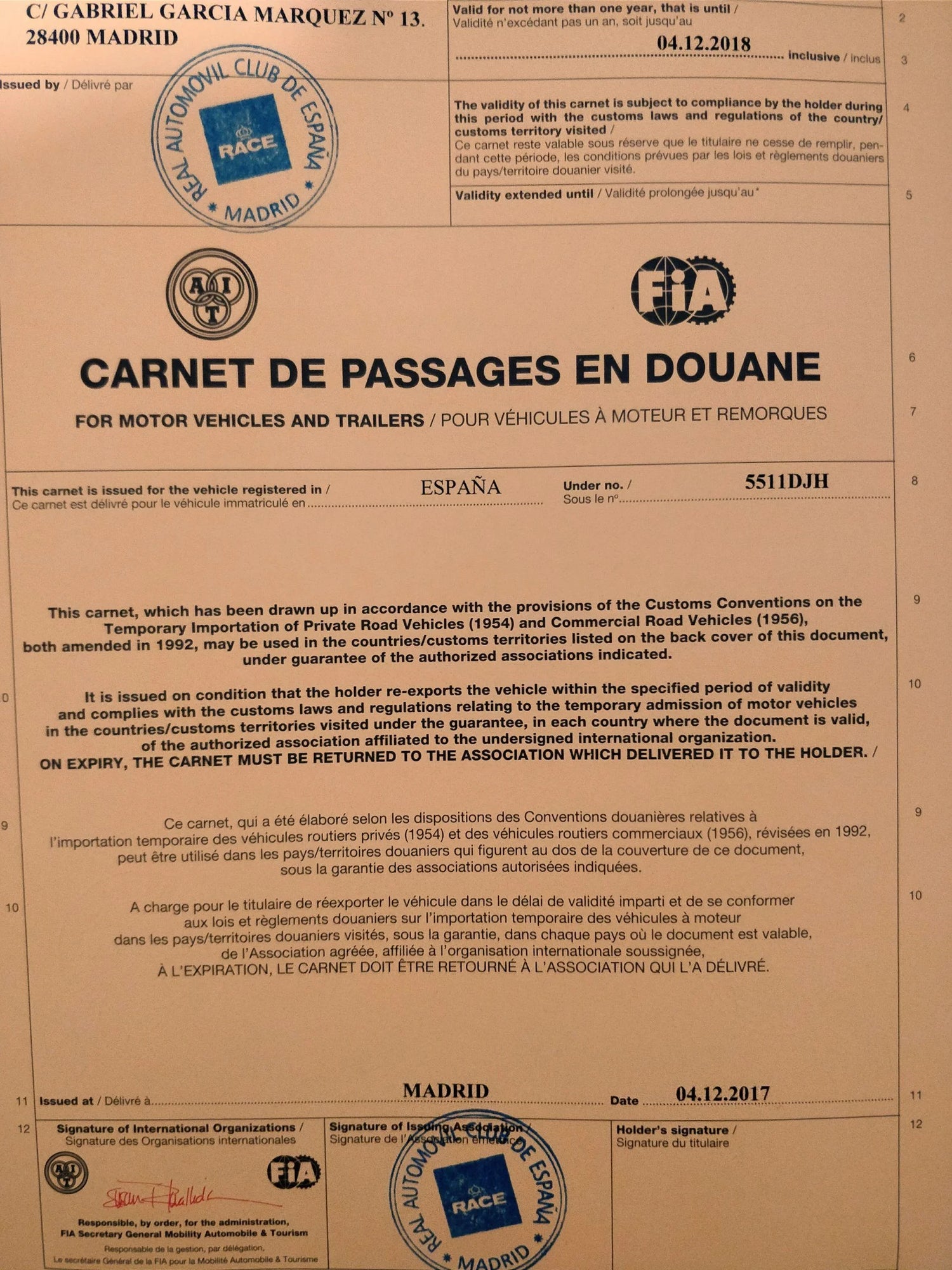
- International driving license : it costs approximately €10, it is processed immediately at the DGT , it allows you to drive through any country and lasts one year . From my own experience, in many countries they don't have the slightest idea what it is. You could show them your library card with conviction and it would be of no use to them.
- Travel insurance: essential on an adventure of this style. It is valid for one year and covers you in case of illness or accident along the way. If you don't get it, healthcare can be very expensive in some countries.
- Motorcycle insurance: the one I already have in Spain. Our insurance covers a large part of Europe. Even Türkiye and Morocco, if I'm right. From there you have to take out insurance for days in the countries you are visiting.
- Vaccines: To cross certain borders it is necessary to be vaccinated, especially against yellow fever and meningococcal meningitis . You must prove it by presenting the international vaccination card, which is available at Foreign Health . There are others that are recommended in many countries, especially in South America, Africa and Southeast Asia. «Malarone» . It is something like a shock treatment in case you have the first symptoms of malaria until you reach a place where you can be treated. Each person must decide whether or not to get vaccinated and what they have or want to get vaccinated for. All depending on where you are going and how long you will be traveling.
Lastly, I bring photocopies of the documents. They really have no value, not even if they were certified. In any case, I hope that, if I mess up, they will be of some use to me...
